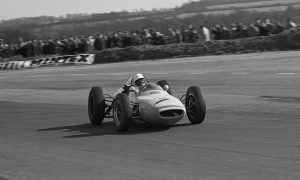INCREASING THE TURBINE’S SIZE
Eager to maximise aerodynamics and have a tight rear end on its 2014 charger, the Scuderia ran a very compact turbocharger installation last year. But it ended up compromising outright turbine efficiency, as aero gains did not make up for the lack of engine power. Indeed, a smaller turbine will de facto generate less power and more back pressure, which ends up penalising the internal combustion engine (ICE) in the higher RPMs (since wastegates are quite often open).
“A definite weakness of last year's car was that the amount of electrical energy we were able to recover from the turbo was not really good enough for producing competitive power levels during the race,” Ferrari technical director James Allison admitted when the new SF15-T was launched.
“It was one of the reasons Ferrari's qualifying performance was relatively stronger than race performance last year. We have tried to change the architecture of the engine to make it a better compromise."
When the time came to design the 059/4, Maranello engineers reconsidered the respective importance of engine and aero and decided to increase the turbine’s size. The device now sits within the gearbox housing, which also includes part of the manifold, the collector and part of the single exhaust. Having a bigger turbine means that the MGU-H absorbs more power from the turbine shaft, which in turn leads to greater electric deployment. In just one season, Ferrari has succeeded in solving the issues that are currently plaguing Honda. This has been achieved through a less bold but more coherent technological approach, clever recruiting, and massive investment.
What’s more, Ferrari’s partnership with Shell has been strengthened in order to improve energy efficiency and prevent knock (uncontrolled explosions that disrupt the combustion process).
“Last year we were developing in parallel with Shell, but this year we have set targets to them in terms of performance and especially knock,” Fraboni added. "They now know where we want to go and what we want to achieve with the engine and they have to get there.
"So each time we go to the dyno, they will bring candidate fuels to test to make sure we have the best for the races. I think now it is a very close relationship.”
When all combined, these evolutions would have unlocked an extra 60bhp on the Italian power unit (though only Maranello engineers actually know how much ground they have made) and enabled Ferrari to cut the gap to Mercedes.
On the picture above, one can easily spot the radiators, which have a flatter positioning and feature a clever system of louvres that can better channel the airflow on entry and exit (click here for more details).
Below, one can also notice that most components have been streamlined in order to improve insulation and internal aerodynamics.








